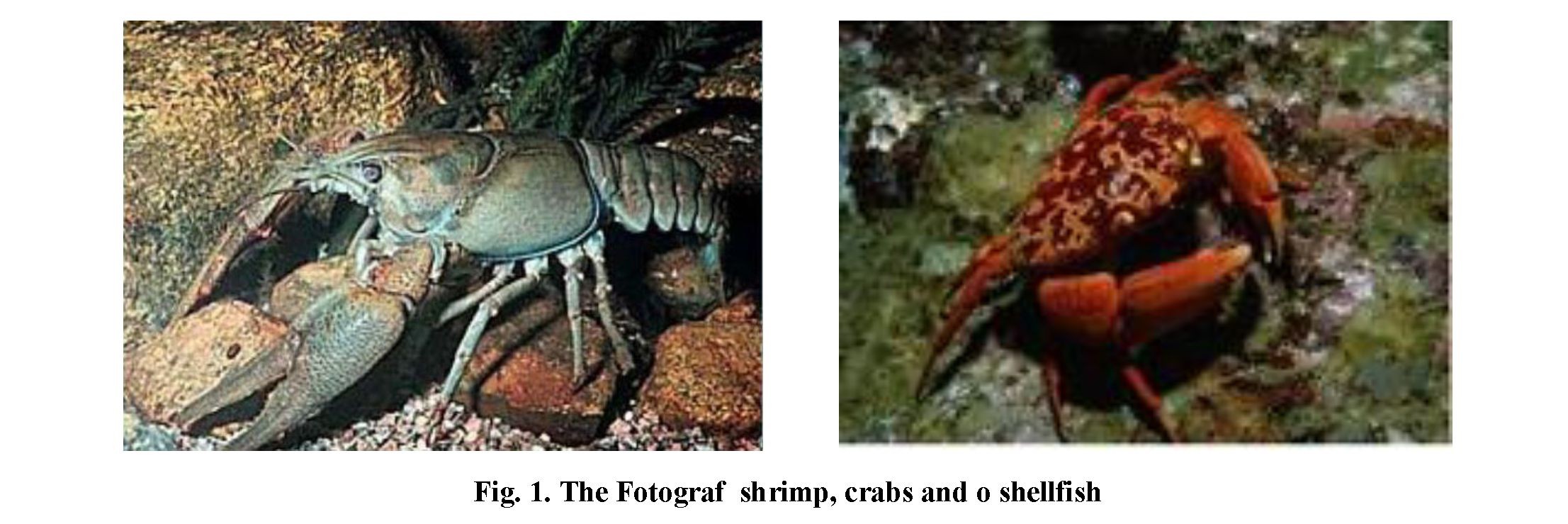The great scientist doctor Ibn Sina (Avicenna) recommended eating honey to prolong life. Avicenna wrote that honey is an excellent remedy for heart, liver and even skin diseases.
Honey bees live and die, their age is short [1]. The working bee lives in the summer for just over a month. But even dead bees can give us quite a bit in terms of treatment. Dead bees, their bodies are called the dead bees [2]. Beekeepers often just throw it away. Little bodies, like all living thing contain:
-proteins;
-fats;
-carbohydrates;
-mineral substance;
Three important components contain bee subs:
chitosan, heparin and bee venom.
Due to the wide beekeeping in Uzbekistan, there is also the possibility of obtaining raw materials for the production of chitin and chitosan from bee submoris on a significant scale.
Usually chitosan in Russia is obtained from the shrimp crabs and other shellfish (fig.1). But, due to the fact that this is a fairly expensive process, the question was raised about obtaining chitin and chitosan from other sources. The most accessible for industrial development of chitosan in the Republic of Uzbekistan is the honeybees. This product is new Uzbekistan to ensure import substitution.
Chitin also has three different crystalline allomorphs: the α-, β- and γ-forms. These differ in the orientation of the micro-fibrils. The commonest form of chitin is α-chitin. Its unit cell is composed of two N,N`-diacetlychitobiose units forming two chains in an antiparallel arrangement.
Biodegradable polymer chitosan is an environmentally friendly product. Chitosan derived from bees pins
Effectively cleanses the body of toxins.
Enhances immunity, improves blood circulation.
Promotes tissue regeneration in the skin.
Binds fats and glucose in the body.
It has an antispasmodic effect, relieves fatigue.|
Chitosan helped reduce the bad cholesterol and triglycerides in the blood while increasing the good HDL cholesterol.
It has the unique ability to attach itself to fats in the stomach before they have metabolized, trapping the fat thereby preventing absorption into the digestive tract.
Rather than being absorbed, the fast is eliminated from body.
Chitin, poly ( -(1-4)-N-acetyl-D-glucosamine),is natural polysaccharide of major importance. The name “chitin” is derived from the Greek word “chiton”, meaning a coat of mail. The use of chitin was first described by the French chemist, Henri Braconnot in 1811. The structure of chitin (C8H13O5N)n is similar to that of cellulose, but with 2-acetamido-2-deoxy--D-glucose (NAG) monomer units, which are attached to each other via (1 -4) linkages. Chitosan is the deacetylated from of chitin (that can have varying degrees of deacetylation), and it is soluble in acidic solutions (sometimes with difficulty) (fig.2.).
We used the dried and crushed dee collected during spring update of bee family and containing a significant amount of chitin. For extraction of chitin, in the first stage, sequentially separated protein (deproteinization) and mineral (demineralization) components of bee, i.e. translated them into a soluble state and removed [3]. Demineralization carried out under influence of 2M hydrochloric acid for 5 hours at room temperature. Deproteinization carried out by treating the crushed material in presence 1 N sodium hydroxide for 1 hour at 800C. Each process is accompanied by washing the raw material until neutral wash water (pH = 7).
In the next step deacetylation of chitin under the influence of 35% aqueous NaOH solution at a temperature of 850C for 4 hours to get chitosan, which is a high molecular weight polymer of glucosamine, and dried at 50-550С. The resulting mass destained with 3% H2O2 solution and washed with ethanol.
 28
28
The above requirements are fully met by chitosan, since it undergoes biological degradation without the formation of harmful substances, is not deficient, forms fiber and is relatively inexpensive, useful for biomedical use (dressing for wounds, adhesive plaster). Chitosan is used in medicine as a disinfectant.
When applied topically, it promotes faster healing after burns and other skin lesions. Chitosan is completely non-toxic and does not accumulate in the upper layers of the skin. It stops the blood, disinfects the wound and exhibits antibacterial properties.
This gives us the opportunity to obtain chitosan coatings in the form of a film local honeybees and to further study its physical and mechanical properties.
References
- .Nemtsev S.V. New sources of biologically active substances in bee products./ Nemtsev and others.// Beekeeping - 2001 -. № 5. P/50-51.
- .Khismatullina N.Z. Practical apitherapy. Perm: ExLibrum, 2009. – P/336.
- Ikhtiyarova G.А., Mamtova Sh.B. Extraction and properties biopolymers chitin and chitosan from dead bees Аpis Mellifera. //Universum Technical science Russia. -Moscow. 2018. – P/31-35.